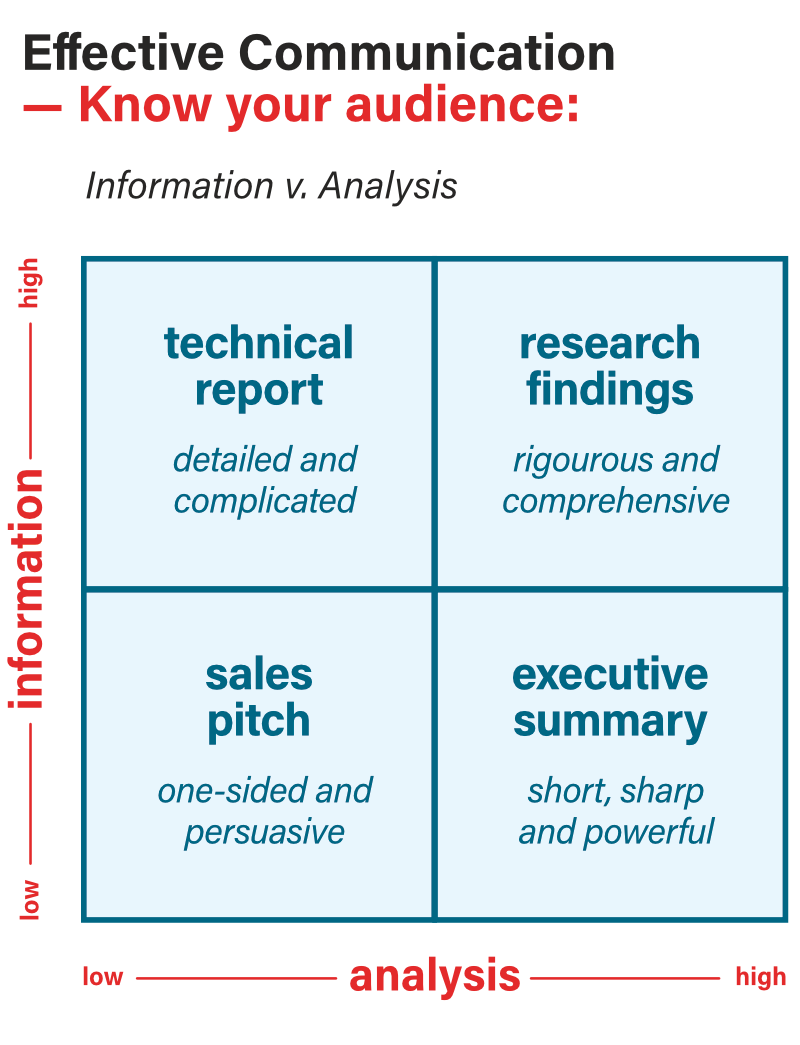Effective Board Communication:
Information vs. Analysis
A key element of effective communication is — know your audience!
When your board asks for information — what they usually want is analysis.
“Analysis is the critical starting point of strategic thinking.”
— Kenichi Ohmae
At The Colloquium Group we have worked with executive teams to help think about what their audience needs when preparing reports or presentations for their boards, peers or stakeholders.
Instead of focusing on what they want to say, they are challenged to present the right kind of message so the audience gets what they need, in the form they need, to take action!
Information is the facts reported on the available data (be it financial, clinical, operational etc). While analysis goes much further — it attempts to give meaning, implications, and tests reasons why this might be happening. It is easy to provide a board with lots of information, but without insightful analysis it is very difficult to make a clear decision.
Some presenters think that 50 pages of information and lots of PowerPoint slides demonstrates thoroughness. However, it usually only deadens the mind.
A board can more
astutely make a decision
when they are provided
with concise analysis.
In our work we identified four different approaches to presenting reports. When leaders use the right approach their presentations are powerful. When they get it wrong, the message falls flat and frustrates everyone in the room as they say, “But what do I do with that information?”

Effective Communication Diagram – Information vs Analysis
The technical report is detailed and complicated. It is high on information and low on analysis and is really only suitable for an audience of technical experts. These may read more like an instruction manual. Decision makers usually lose patience with the length and lack of practical recommendations.
Research findings are rigourous and comprehensive. They as high on information and high on analysis. This approach is most effective when the audience has significant expertise and offers critical analysis of conflicting perspectives. An evidence-based approach e.g. legal memoranda, medical journals, or complex financial modelling etc.
The sales pitch is one-sided and persuasive. It is low on information and low on analysis. This approach is most useful when encouraging one direct response. Often emotional, it takes details and possibilities, synthesising them into simple, clear slogans and statements. Favours endorsements over evidence.
The executive summary is short, sharp and powerful. It is low on information but high on analysis. This approach is most effective for boards, senior management and decision makers. They want a short, summary of the issues and clear recommendations for “what can we do about this?” They will ask for any additional information they might need to assist their understanding and decision making.
Download our worksheet and share it with your team. Contact our team if you would like to learn more about how we can help you become more effective communicators.